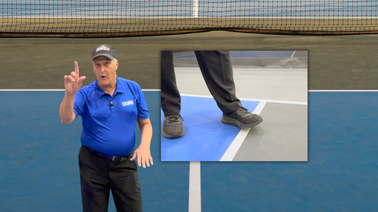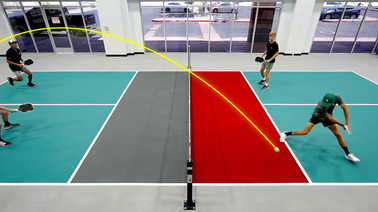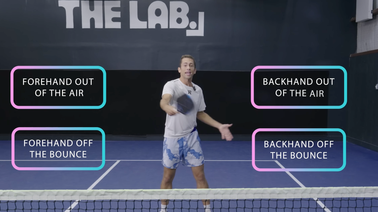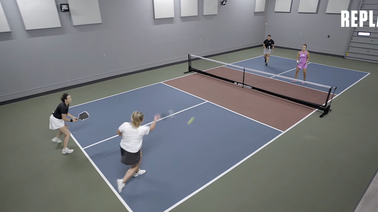
Best Pickleball Paddles for Beginners: Complete Buying Guide with Expert Tips
The truth is, no paddle will magically fix your game, but the wrong one can absolutely make it harder to improve.
Most new pickleball players are using the wrong paddle. Not because they're lazy or didn't do their homework, but because nobody's actually explained how to think about paddle selection when you're just starting out.
You've probably heard terms like "control," "power," and "swing weight" thrown around, but without context, they're just noise. That's where Matt's Pickleball comes in.
Heads up: hundreds of thousands of pickleballers read our free newsletter. Subscribe here for cutting edge strategy, insider news, pro analysis, the latest product innovations and more.
In a comprehensive new video, Matt breaks down everything beginners need to know about choosing their first paddle, cutting through the marketing hype and industry confusion that makes the decision feel way harder than it should be.
The core message? You don't need a $250 pro paddle to get better. You need one that actually helps you build consistency.
The Three Paddle Types: Understanding Your Options
Here's the thing about paddle categories: they're not just marketing buzzwords. Control, power, and all-court paddles actually shape how the game feels in your hands and what kind of player you'll become.
- Control paddles are the most forgiving option. They typically feature thicker 16mm cores, which means more dwell time (that's the time the ball spends on your paddle face), a larger sweet spot, and a softer feel overall. These are built for the slower, touch-based parts of the game that most beginners struggle with. If you're learning to keep the ball in play and reduce errors, a control paddle makes a real difference early on.
- Power paddles do the opposite. They prioritize pace and faster rebound, sometimes with thinner 14mm cores or less, sometimes paired with stiffer frames or elongated shapes. But here's the catch: that power comes with a tradeoff. You lose margin for error. Miss the sweet spot, and you'll find yourself popping up resets, struggling with dinks, or sending third shots flying past the baseline.
- All-court paddles sit in the middle. They blend both worlds, offering a more balanced feel without rushing your development. If you've got some racket sport background and you're picking things up quickly, an all-court paddle can work. But honestly, most beginners unknowingly start with a power paddle because it feels exciting on the first swing or because a friend recommended it. That initial excitement often becomes a liability once rallies slow down and you need actual control.
Not All Beginners Are Created Equal
Here's where most buying guides get it wrong: they treat all beginners the same. But there's a massive difference between someone picking up a paddle for the first time and someone who played varsity tennis and is now learning pickleball. Both are technically beginners, but they need different tools.
If you're just starting out, maybe you've played a few times or you're still figuring out how to keep score, you're probably in the 2.0 to 3.0 range. At that level, the priority is simple: keep the ball in play. You're not hitting with consistent depth or spin. Your contact point changes swing to swing. You're still learning how to reset or absorb pace. This is where a control paddle makes the game more playable.
Around the 3.0 to 3.5 range, you're winning more points and aiming your shots. You might even be playing in recreational ladders or leagues. There's room to experiment here. All-court paddles let you play a more aggressive style without giving up the forgiveness you need. You might be trying spin, changing grips, or adding tungsten to fine-tune feel. But even here, the best paddles are the ones that keep your game clean and consistent, not flashy or chaotic.
The mistake most new players make is thinking a $250 power paddle or a pro-endorsed model will make them better. But that's like learning to golf with tour blades. It punishes every mishit and slows down your learning curve. The better move is starting with something that helps you succeed with imperfect contact and real-world footwork. That's what actually builds confidence and skill.

The Specs That Actually Matter
This is where things get technical, but stick with me. Understanding a few key specs can save you from buying the wrong paddle.
- Static weight is what everyone lists first. It's the paddle's weight on a scale, usually between 7.6 and 8.4 ounces. But static weight alone doesn't tell you how the paddle plays. You need to look at how that weight is distributed.
- Swing weight is what really matters. It measures how heavy the paddle feels during your swing, and it has a massive impact on timing, hand speed, and fatigue. Two paddles with the same static weight can feel totally different depending on their balance point and shape. A higher swing weight adds plow-through and depth, but slows down your hands, especially noticeable in resets or fast hand battles. For new players, a swing weight between 105 to 115 gives you enough mass to keep the ball stable without wearing out your arm.
- Twist weight is another underrated metric. It measures how stable a paddle is when you miss the sweet spot, which you will, especially when starting out. A twist weight of 6.5 or higher makes those mishits feel more controlled. Lower twist weight paddles might feel faster, but they're also much less forgiving.
- Core thickness is closely tied to control. A 16mm core gives you more dwell time, a muted response, and a wider sweet spot. All of which make it easier to keep the ball in play. Thinner cores (14mm and below) tend to deliver faster pop off the face, but come with a smaller margin for error. For beginners, that added dwell time from a thicker core is a better foundation.
- Paddle shape also matters. Standard and hybrid shapes are the best starting points. They give you a larger sweet spot and more forgiveness. Elongated shapes offer reach and higher spin potential, but come with higher swing weights and less forgiveness, which can make resets and hand battles more difficult when you're still building feel.
- Balance point plays a subtle but important role. A paddle with more weight towards the head will feel heavier in the swing, even if it's light on the scale. One that's handle-biased will feel quicker and more maneuverable. If a paddle feels sluggish or like it's lagging behind your hand, it's often a balance issue, not a static weight problem.

The point isn't to obsess over every number. It's to understand how they translate into feel. A paddle that's well-matched to your skill level and swing tendencies will make the game feel more natural and frankly fun. One that isn't will fight you on every shot.
Core Materials and Internal Construction: What's Inside Counts
The core material and internal construction shape how the paddle feels at contact and whether it gives you confidence or holds you back as you develop.
The most common core is polypropylene (read: plastic) honeycomb. It's been the standard for years because it balances weight, control, and durability. You'll see it in everything from budget paddles to top-tier pro builds.
Foam core construction is growing fast. These paddles use various types of foam instead of honeycomb, and they feel very different: quieter, softer, and often more stable on off-center hits.
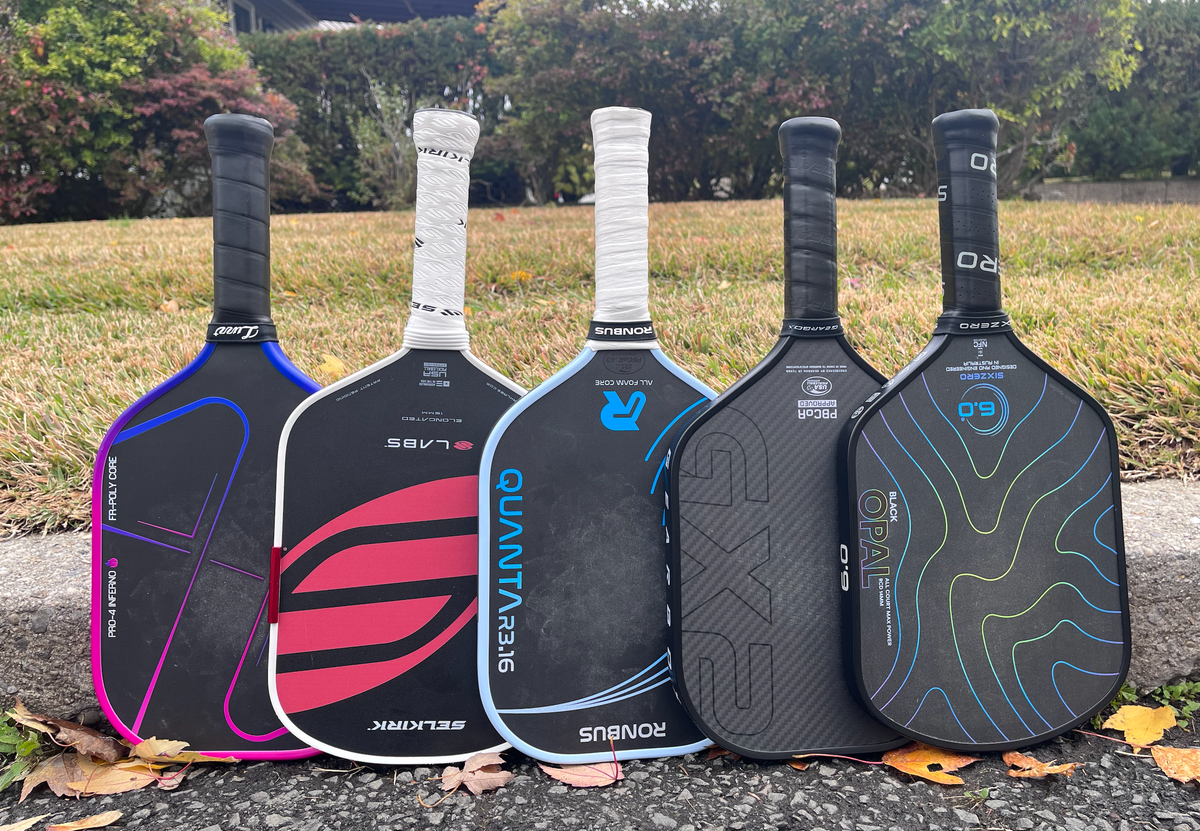
That said, not all foam cores are equal. Brands tweak density and stiffness to dial in feel and power. So one foam core paddle might feel plush and forgiving, while another feels crisp and punchy.
You'll also see hybrid approaches like honeycomb cores with injected foam around the perimeter (typically referred to as Gen-3 paddles). This edge foam increases stability, enlarges the sweet spot, and reduces vibration.
The Amazon Trap: What to Actually Avoid
At this point, you've got a solid handle on what to look for in a new paddle. But just as important is knowing what to avoid. The biggest mistake Matt sees new players make is grabbing the cheapest paddle on Amazon and calling it a day.
The appeal is obvious. It looks like a good deal. Tons of reviews, flashy product pages, maybe even the word "carbon" somewhere in the title. But in most cases, these paddles are built in factories with no real experience in pickleball. They're made with cheap materials, painted fiberglass instead of real carbon fiber, thin cores or stiff layups, and minimal quality control.

The result is a paddle that feels unpredictable, lacks touch, and does little to support your development. Sure, it might hit hard, but it won't help you improve. And worse, it may actually make the game harder.
To be clear, you don't need to drop $250 on your first paddle. But if you're spending $100, spend it on something that supports your learning curve from a reputable pickleball-specific brand like:
- Six Zero
- Vatic
- Friday
- Ronbus
- 11Six24
Think of it like running shoes. If the fit is off, every mile feels harder than it should. Same goes here. You want a paddle that gives you confidence, not one that sends the ball flying every time you take a swing or just mishit it.
Common Beginner Mistakes: The Traps Everyone Falls Into
A lot of new players still fall into the same predictable traps. Understanding these mistakes can help you avoid them.
1. Chasing power is the first one. It's tempting to grab a paddle that hits hard because who doesn't like cracking a drive or slamming an overhead? But if you don't have the control to manage that power, it becomes your biggest liability. You'll pop up resets, struggle with dinks, and send third shots flying past the baseline. A power-first mindset leads to inconsistency. Focus on control. Power can come later once your mechanics and timing are dialed in.
2. Spin obsession is next. Spin looks flashy and the marketing around it can be very persuasive, but without the ability to place your shots or control depth, all the spin in the world just makes your errors more dramatic. Don't get distracted by textured faces or RPM numbers if you're still figuring out your contact point. Spin helps when you already have control, not before.
3. Copying what the pros use is another common mistake. It makes sense. Ben Johns plays with a certain paddle, so it must be the best, right? Not necessarily. Pros aren't just better players. They're also using modified paddles. They add tungsten, change balance, tweak handle shapes. So even if you bought the same model, you're not getting the same setup. And unless your technique is just as clean, it won't perform the same way in your hands.
4. Following your friend's lead is tempting too. It's a social game, and most of us borrow gear at some point. But what feels great for their swing, strength, and background might feel totally wrong for you. Try their paddle, sure, but buy based on what works for you, not what works for them.
5. Going too light or too heavy is the final trap. A super light paddle might feel quick at first, but it can lead to instability and far less control. A heavy one might offer power, but if the swing weight is too high, it'll wear out your arm and slow you down at the net.
That's why Matt keeps coming back to the same guideline:
- A swing weight between 105 to 115
- A twist weight of 6.5 or higher
- A static weight of 7.8 to 8.1 ounces.
That range gives you control, forgiveness, and long-term comfort.
How to Actually Choose the Right Paddle
Picking the right paddle isn't about chasing power, copying pros, or grabbing whatever looks good on Amazon or on the shelf at Dick's Sporting Goods. It's about giving yourself the best chance to improve quickly and enjoy the game while you do it.
Start with control. You need a paddle that helps you keep the ball in play, not one that punishes every mistake. Materials matter too, but not in the way most marketing suggests. You don't need fancy tech. You need a paddle that gives you dwell time, reliable feedback, and a predictable response. That's what builds consistency.
If you're unsure what feels right, try to demo a few before buying. Feel always beats flash.
The truth is, no paddle will magically fix your game, but the wrong one can absolutely make it harder to improve.
So don't fall for hype, skip the gimmicks, and don't assume more expensive means better.

Love Pickleball? Join 100k+ readers for free weekly tips, news & gear deals.
Subscribe to The DinkGet 15% off pickleball gear at Midwest Raquet Sports






